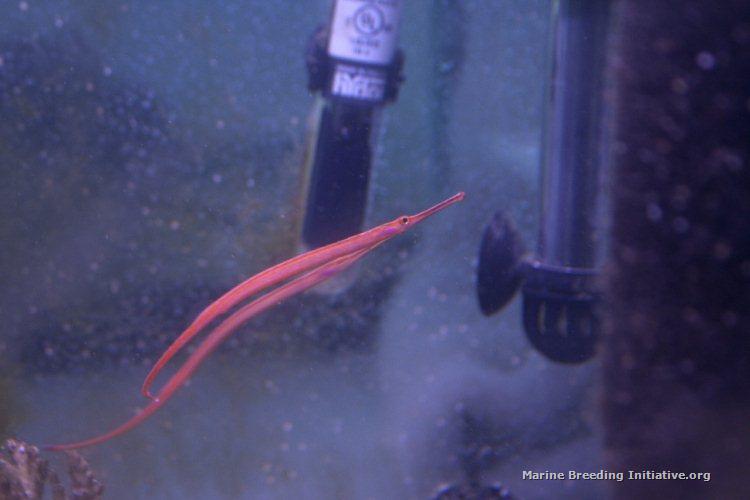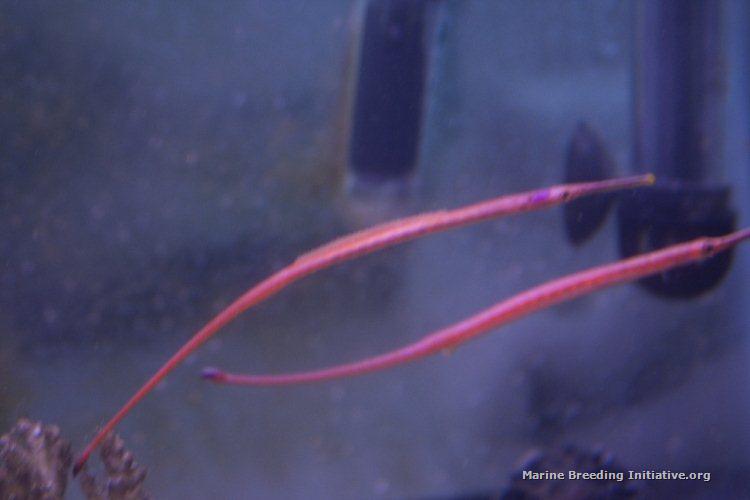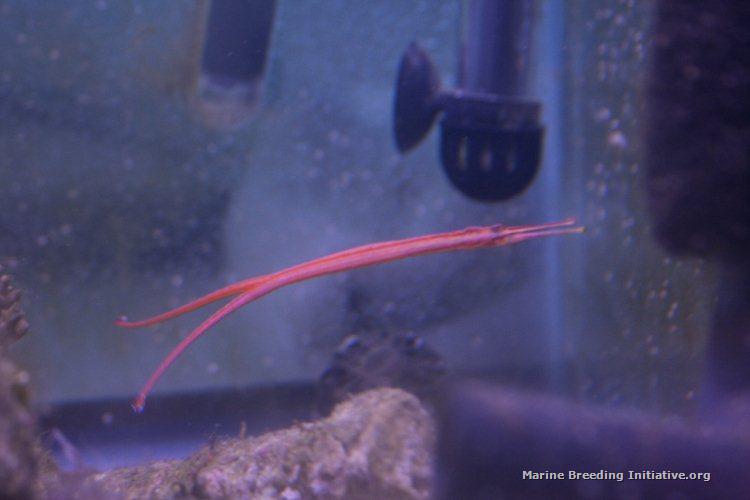CHAOS!!! MAYHEM!!! Boy, was THAT ever a BAD IDEA!!!
As soon as I placed the "Male" from tank #3 into Tank #1 with my "eating female", she started showing major aggression towards "him". If you review my notes earlier in this journal, the only reason that I am assuming the "males" in Tank #3 are males is because they were showing a great deal of aggression towards each other before I moved them into their own tank, and then this aggression died down, presumably because of the absence of any female to fight over.
I am now thinking that it is entirely possible that the two fish I've been keeping in Tank #3 are actually two females. I have personally witnessed strong aggression between two female Bluestripe pipefish before, back when I had just acquired two male/female pairs. When there were two pairs, everybody got along just fine in the same tank, but then one of the males died, and the mated female started showing extreme aggression towards the widowed female, who I had to remove for her protection. Ultimately, with the Bluestripes, the mated female eventually died, too, a few months later, and when I placed the lone male in with the "widowed" female, they immediately bonded, and they are my parent broodstock pair to this day.
Another possible theory is that these fish are more loyally monogamous than they are generally considered to be, and the pair in Tank #3 really ARE males, but this female is not ready to accept a new, usurping male supplanting her mate so suddenly and quickly.
Additional information about this includes the fact that the remaining fish in Tank #3 and the male from Tank #1 I put in there last night seem to get along just fine. In fact, they were doing the bonding "snouts pointing downward" behavior I described as (2)(b) in this post
http://www.mbisite.org/Forums/fb.ashx?m=77996 this morning. Ultimately, I don't really know yet the gender of the two fish I've been keeping in Tank #3, but given the new information, I'm leaning towards thinking they are actually two females.
At any rate, the aggression being shown to the new introduction in Tank #1 was so great that I decided to move everybody back to their "home" tank this morning, reversing the change I made last night.
The male who belongs in Tank #1 was greeted enthusiastically by his female, and they immediately (and I mean IMMEDIATELY) started an egg transfer (which was due to happen this morning)!
Here are some pics:
In this one, you can see the female's ovipositor. She is the fish on top, and the bump on her lower side is usually not there:

In this blurry (sorry) image, what looks like eggs on the male (top fish swimming upside down) is really just his flaps opened up, as this was taken at the very beginning of the egg transfer, before they had actually transferred any eggs:

And here is a good shot of the actual mating/egg transfer behavior:

They actually get quite acrobatic during this process, at times snaking around each other and doing barrel rolls, and at other times making more of an X shape than an = shape.
I guess that for this round, at least, I'll just have to continue to do my best to condition this male as well as possible.